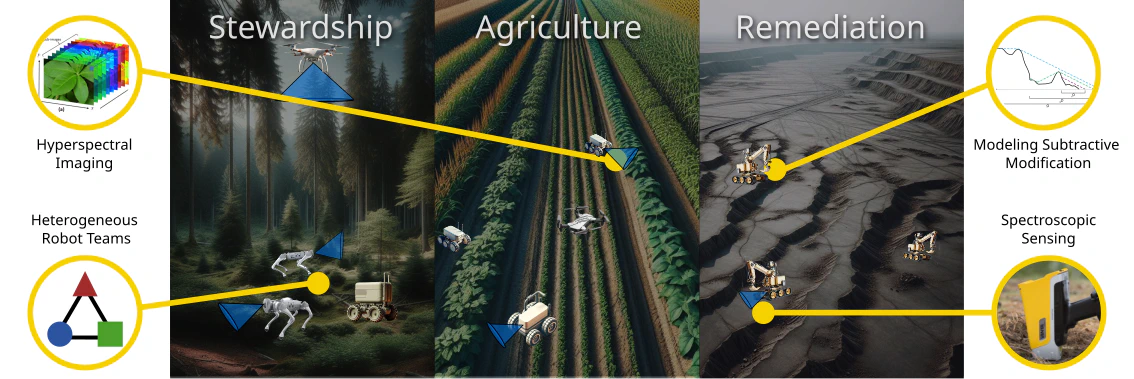EcoRobotics Lab
Autonomous Solutions for Ecological Monitoring and Restoration

Research Vision
Our research vision aims to address critical ecological and sustainability challenges in environmental remediation and stewardship through foundational research in robotics and its practical application.
The EcoRobotics Lab at Arizona State University develops practical robotics solutions for environmental remediation and stewardship—removing pollutants from water and soil while protecting and restoring ecosystems through conservation and sustainable practices. Together, these efforts aim to enhance biodiversity and ecosystem resilience.

Focus
The focus is on creating robust, long-term autonomous solutions using a heterogeneous team of robot (wheeled, legged, and aerial) equipped with diverse sensing capabilities to effectively monitor and modify unstructured environments. The research addresses challenges such as navigating rough terrains, designing excavation frameworks for decontamination, developing advanced sensing technologies for in-situ analysis using hyperspectral and spectroscopy sensors, and coordinating multiple robots to efficiently cover large areas.
Initial Projects
Our initial research projects offer exciting opportunities to make real-world impact and I’m open to exploring new directions based on student interests
➢ Soil Remediation: Unregulated industrial activity has led to widespread soil pollution with heavy metals, hydrocarbons and toxic elements, posing serious health and ecological risks. We want to develop both ex-situ and in-situ robotic systems to monitor and clean contaminated soils to restore ecosystem health.
➢ Crop Health Monitoring: Creating affordable multi-robot systems for small farmers (who provide 1/3 of the world’s food supply) using spectroscopy, moisture sensors, and cameras to monitor photosynthesis rates and plant production.
➢ Invasive Species Detection: Tackling a complex challenge with massive impact—the US spends $21 billion annually managing invasive species. We’re developing hyperspectral imaging and machine learning systems deployed on wheeled, legged, and aerial robots to detect and monitor invasive plant species in dense forest environments.
➢ Looking Ahead: I imagine exciting future directions for our lab could include aquatic coral reef monitoring, ocean cleanup robotics, sustainable manufacturing processes, discovering sustainable agricultural practices, and whatever environmental challenges spark your curiosity. The beauty of starting fresh is that your passions and ideas will help shape where we go next.
